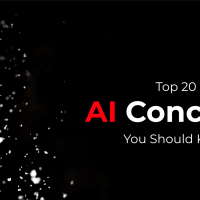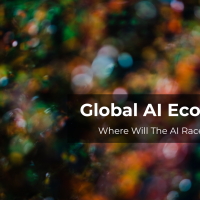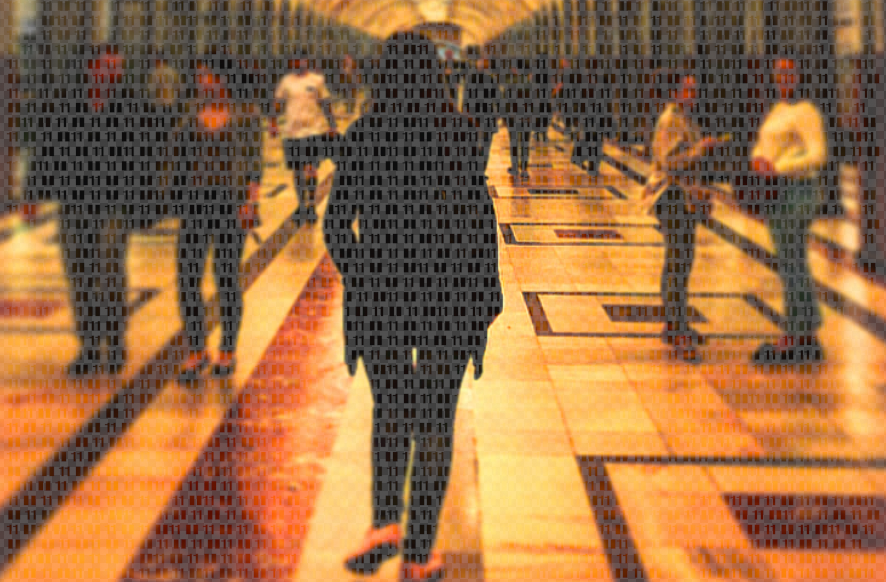
“It is a capital mistake to theorize before one has data.” Arthur Conan Doyle, Author of Sherlock Holmes
“We’re entering a new world in which data may be more important than software.” Tim O’Reilly, Founder, O’Reilly Media
“Data is a precious thing and will last longer than the systems themselves.” Tim Berners-Lee, father of the World Wide Web
“It’s difficult to imagine the power that you’re going to have when so many different sorts of data are available.” Tim Berners-Lee
“Web users ultimately want to get at data quickly and easily. They don’t care as much about attractive sites and pretty design.” Tim Berners-Lee
“Data, I think, is one of the most powerful mechanisms for telling stories. I take a huge pile of data and I try to get it to tell stories.” Steven Levitt, Co-author of Freakonomics
“Everything is going to be connected to cloud and data… All of this will be mediated by software.” Satya Nadella, CEO of Microsoft
All around us, we are surrounded by data. Nearly everything in our lives is now data denominated. If you are using Google Maps to navigate your way to work or driving around in an unknown town, you are using data, as that software relies on data feeds from satellites to provide perfect navigation. The internet works on data. Your search engines rely on data. When you browse or chat up friends on social media, chances are that your entire activities on social media are being compiled into data: your browsing location, interests, pages you visit, friend requests, etc. If you go to the hospital for a checkup, you are already a component of the massive healthcare databases. If you are looking for love or just casual hookups on Tinder and other dating sites, you would also understand that profiles are compiled into data that can then present you with what you want when you do a little searching.
Indeed, data is everywhere around us. Our phones, internet connections, how we work, study, play and relate with each other is all being compiled into data that is used in many ways that we may not even know. Indeed, more data is being created now than ever before in the history of mankind. In the last few decades, we have seen the world move from the era of industrialization to the era of digitalization (the digital era), and now to the era of data or what may be called the era of datafication. Digitization has had a major impact in driving productivity and improvements in business, but it is thought that datafication will be even more profound in the change that it brings tour world (Newton, 2014).
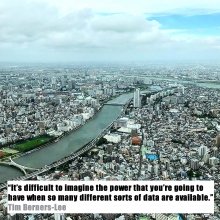
Even though the concept of datafication may look new, it actually came into being at about the same time that digitization gave birth to the field of computer science. These days, computer science is no more the in-thing; the field of Data Science seems to have taken over. Data science has even been described as the “sexiest job of the 21st century” (Davenport and Patil, 2012). This is not far from the truth as the field of Data Science had once been named by freelance job site Upwork as one of the rising in-demand skills in its workplace.
The global marketplace eats, breathes and thrives on data. The blockchain is driven by data. The core of deliverables of Artificial intelligence is driven by data. As businesses and governments go digital, their need for data has increased correspondingly. Planning for government programs is basically impossible without data. Businesses thrive on data; else how would they ever be able to sell to anyone without having an idea of who needs their product, how many people constitute their target market, the various market segments and the demographics of their target market? We are also seeing datafication on an individual basis. An individual classified as a social media influencer is simply someone who has gathered a large online following, and has basically converted this following into data that can be profited from.
Indeed, it is very difficult for any organization to operate in today’s world without data. For instance, a government may want to digitally capture the personnel in its payroll principally for reduction of payroll fraud. But the data collected can be used for other beneficial purposes such as improved administration of worker benefits or better tax administration. This is basically what datafication is all about; it takes a process, converts it into data, and uses these data in many more beneficial ways that is beyond the original intent and scope of collection of the data in question.
Let’s also assume a company wants to run an entrepreneurship training program for unemployed youths in its area of operation as part of its corporate social responsibilities. This company is going to need some basic data to run the program. Data that such a venture will require will include things like:
- Number of unemployed youths in that locality.
- The demographics of the unemployed youth population (i.e. age, sex, marital status, etc).
- The educational status of the target population.
The entire process can be converted into data, and this data can then be tracked, optimized and monitored. Now if a government decides to implement a social welfare program for the unemployed in that locality, it can easily collect these data from that company. This would save a lot of money which the government may have spent in acquiring this information anew. This is also another element that showcases datafication at work.
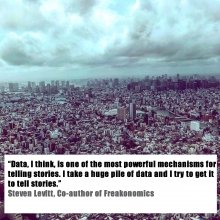
So what is datafication?
To put it succinctly, datafication is simply the action of taking people, processes, events and indeed aspects of the world, and turning it all into data that can be used on a larger scale. The word “datafication” is a new addition to the lexicon, and was first used in a joint essay publication by Kenneth Neil Cukier and Viktor Mayer-Schoenberger. This essay was published on the Foreign Affairs website in 2013. In that essay, Cukier and Mayer-Schoenberger broadly discussed the role of “big data”, describing it as information that is sourced from a large array or resources and which is put to use in very extraordinary ways, far beyond the regular or intended use that the data was collected for. (Cukier and Mayer-Schoenberger, 2013)
According to the duo, “big data” cannot be spoken of in terms of size alone. Rather, they argued that big data exists because of the new ability to take various unquantified aspects of our world, put them all together and render them into data of various types, formats and applications. They termed this process “datafication”. The essay also went ahead to draw a number of inferences, citing an example of how friendship requests and “likes” on Facebook has been turned into data. We have also witnessed how Facebook has turned the concept of social interaction into data that it has been able to monetize greatly, also helping businesses that use the Facebook advertising platform to monetize the data as well.
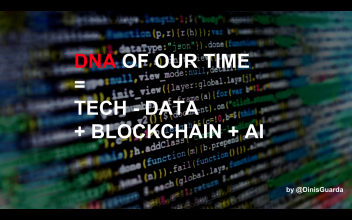
What Does Datafication Entail?
Datafication will entail a number of changes to how data is collected, interpreted and compiled. For instance, the emphasis of datafication in terms of size of data collected is on expanding the scope and scale of data collection. The preference is to collect a large pool of data as opposed to the use of small sample populations, which has been the age-old practice in statistics.
The datafication process also requires the acceptance of a higher degree of variability in the quality of data collected. Collecting vast amounts of data as opposed to specially curated pieces of data will obviously mean that data collected may contain more inconsistencies than normal, but this can be tolerated as the benefits of using such data is seen to outweigh whatever exact, curated data can offer. A third sacrifice that must be made in the process of datafication is to change the emphasis of data collection and study from the “why”, to the “what”. For instance, instead of a company focusing strictly on why sales numbers have dropped, datafication encourages the company to shift focus from “why”, to collecting as much data as possible about sales events and everything that has to do with sales, so as to get a less myopic view of the issues involved.
Why is Datafication Important?
Why do we need datafication anyway? We have time-tested methods of collecting, analyzing and using data. Why should we have to make the transition from these methods to the datafication model? Perhaps a way to look at this is to understand that as a process, object or activity evolves, everything around it has to evolve along with it or a systemic imbalance will be created. The transition of the world into ever increasing usage and applications of digitization has created the need to create a system that can effectively handle all the information that is flowing around the globe. Therefore, datafication has evolved as a necessity of increasing digitization, aimed at creating value for businesses and individuals.
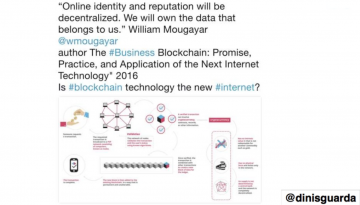
Everyday Examples of Datafication
We find applications of datafication in government activity, businesses and even in private capacity.
1.Datafication for Government
Governments are actively deploying datafication in management of workforce data. This example was cited previously in the opening paragraphs.
2. Datafication for Business
Data for a business can mean the difference between profits and huge losses. That is why businesses, especially those that rely on pay-per-click (PPC) advertising, are resorting to datafication models to help them save money or increase their profits. A common use case of datafication for business can be seen in social media advertising, which is a form of PPC ads. When setting up an advert, a business is allowed to choose demographics, geo-locate their ads or enter in user search phrases and browsing patterns in an attempt to hit the sweet spot; the precise target market. The PPC platforms (Adwords and Facebook) will use in-built algorithms to target the user base that best matches these ad parameters. Users of these social media platforms are usually sent promotions that match the monitored data of their activity and interests (Shilova, 2017).
One of the foremost fashion schools in West Africa was able to use this technique to identify its target market. By performing ad analytics on data of its existing customer base, it was able to determine that its fashion training programs appealed more to young females who were graduates of a higher institution and who came from relatively well-to-do backgrounds. The company used this information to create ads which were targeted to individuals who fit this profile, increasing its revenue base and reducing costs that would have been wasted on untargeted ads. Without datafication, this company would have been unable to make the adjustments required to improve its revenue.
Many companies have also used datafication in other ways. Human resources departments are increasingly turning to datafication to recruit staff with certain skills sets. For instance, IBM was able to identify emotional courage as a much needed asset that was required in its sales people. The company turned to the extensive database of 40 million job applicants, workers and managers that had been warehoused by Kenexa, a recruitment company IBM acquired in a $1.3billion takeover in 2012 (Gover, 2015). The company was then able to use the information to build a profile of the kind of people it needed to employ as salespeople.
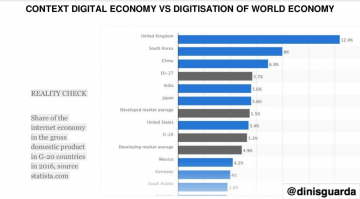
3.Datafication for Personal Use
When it comes to personal use, datafication has to be able to make the everyday life of an individual a lot easier. One way that user experience has been improved by datafication is in the area of personal finance. P2P lending platforms are a classic example of datafication for personal use. A P2P lender’s smartphone app can harness user information and transaction records from the supplied bank account. This information can be used to quickly compile the applicant’s credit rating, and a loan can either be approved or denied in a matter of minutes. This not only provides easy access to finance for the banked population of a country, but it can also capture the unbanked populace, thus improving financial inclusion in a society.
Another use case for datafication in individual circumstances is commonly seen in the entertainment world. If you are a boxing fan and love to watch classic boxing fights on YouTube, you will notice that YouTube uses predictive analysis to come up with suggestions of classic boxing fights you may find interesting. YouTube has predictive analysis algorithms that can track your previous viewing preferences and behavior, tie it to your computer and store this information in data form. When next you login, the site’s algorithms can match this data to the individual and the computer and come up with viewing recommendations.
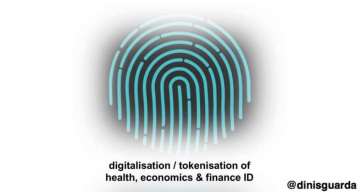
But… the global economy is not digitalised.
“In some ways, incumbents have a lot of benefits over new players, over start-ups. They have customers, they have great data, they often have a brand. They have financial resources, which a start-up may not have. The question is, can all of those capabilities and assets be deployed in a way that allows you to defend against new attackers as digital disrupts your industry?”
Paul Willmott | Director at McKinsey
“In today’s world of exponential change, organisations that get too comfortable with the status quo are at major risk of disruption. If you’re not experimenting and, as a director, if you’re not asking questions about how your organisation is navigating and plugging into disruption, forming new ecosystems, and tapping into open markets, then your organisation is at risk. In the area of talent alone, if you’re not leveraging talent outside your organisation, you’ll never win the war of ideas because the smartest people in the world don’t work for you.”
Andrew Vaz | Global Chief Innovation Officer at Deloitte
“The biggest impediment to a company’s future success is its past success.”
Dan Schulman | CEO of PayPal
Even if datafication is evolving at fast speed, the world is far from being fully digitised. In emerging economies, for example, even though citizens use mobile and smart phones technologies and devices, its government infrastructures are still not using digital principles, so these are far from being digitally transformed.
In an interesting study published by the Harvard Business Review, authors, Bhaskar Chakravorti, Ajay Bhalla and Ravi Shankar Chaturvedi, aimed to measure each country’s current state of digital evolution and the preview of their digital evolution over time. They thus came up with a chart, that can be seen as a map of our digital planet. According to the authors, countries on this chart fall into four zones: Stand Out, Stall Out, Break Out, Watch Out. Some countries are at the border of multiple zones.
Paradoxically, the countries that fall into the break out zone, which tend to correspond to countries with emergent economies, are the ones that can paradoxically benefit from not having public services fully digitised and mature Governmental institutions. By not having to deal with legacy issues, these economies are more able to fully embrace new disruptive technologies like blockchain and AI, as ways to foster a new wave of innovation that isn’t slowed down by politics and closed silos.
Conclusion
As the impact of datafication on human existence become increasingly widespread, so also have the calls as to how this process can be managed responsibly has grown. For instance, the recent scandal involving Facebook, where personal identifiable information of 87 million of its users was shared with Cambridge Analytica in order to influence voting opinion and patterns (Solon, 2018) has triggered intense scrutiny into the potential risks of datafication. Should we find ourselves as human beings at a place of such vulnerability to datafication? If yes, to what extent? It is therefore imperative that a framework that will help us understand the impact of datafication and the extent to which datafication should be done, be developed.
Datafication may have its benefits, some of which have already been mentioned. But it should also have its limits. What those limits are should be part of the discourse on this topic.
References
Davenport, T. and Patil, D. (2012). Data Scientist: The Sexiest Job of the 21st Century. October 2012 Issue. [online] Baltimore: Harvard Business Review. Available at: https://hbr.org/2012/10/data-scientist-the-sexiest-job-of-the-21st-century [Accessed 15 Aug. 2018].
Cukier, K. and Mayer-Schoenberger, V. (2013). The Rise of Big Data. [online] Foreign Affairs. Available at: [Accessed 15 Aug. 2018].
Gover, I. (2015). 5 Companies Using Big Data to Transform Human Resources – Everwise. [online] Modern Workforce by Everwise. Available at: [Accessed 15 Aug. 2018].
Ericsson, (2014). The Impact of Datafication on Specific Landscapes. 1st ed. [ebook] London: Ericsson, Imperial College Business School & UK’s Sustainable Society Network, pp.11-12. Available at: https://www.ericsson.com/assets/local/news/2014/4/the-impact-of-datafication-on-strategic-landscapes.pdf [Accessed 15 Aug. 2018].
Newton, P. (2014). What is datafication?. [online] Intelligent Head Quarters. Available at: https://www.intelligenthq.com/innovation-management/datafication [Accessed 15 Aug. 2018].
Upfront Analytics. (2015). What is Datafication? – Definition & Examples. [online] Available at: [Accessed 15 Aug. 2018].
Shilova, M. (2017). Datafication concept: definitions and examples – Apiumhub. [online] Apiumhub. Available at: https://apiumhub.com/tech-blog-barcelona/datafication-examples/ [Accessed 15 Aug. 2018].
Solon, O. (2018). Facebook says Cambridge Analytica may have gained 37m more users’ data. The Guardian. [online] Available at: https://www.theguardian.com/technology/2018/apr/04/facebook-cambridge-analytica-user-data-latest-more-than-thought [Accessed 15 Aug. 2018].

Dinis Guarda is an author, academic, influencer, serial entrepreneur, and leader in 4IR, AI, Fintech, digital transformation, and Blockchain. Dinis has created various companies such as Ztudium tech platform; founder of global digital platform directory openbusinesscouncil.org; digital transformation platform to empower, guide and index cities citiesabc.com and fashion technology platform fashionabc.org. He is also the publisher of intelligenthq.com, hedgethink.com and tradersdna.com. He has been working with the likes of UN / UNITAR, UNESCO, European Space Agency, Davos WEF, Philips, Saxo Bank, Mastercard, Barclays, and governments all over the world.
With over two decades of experience in international business, C-level positions, and digital transformation, Dinis has worked with new tech, cryptocurrencies, driven ICOs, regulation, compliance, and legal international processes, and has created a bank, and been involved in the inception of some of the top 100 digital currencies.
He creates and helps build ventures focused on global growth, 360 digital strategies, sustainable innovation, Blockchain, Fintech, AI and new emerging business models such as ICOs / tokenomics.
Dinis is the founder/CEO of ztudium that manages blocksdna / lifesdna. These products and platforms offer multiple AI P2P, fintech, blockchain, search engine and PaaS solutions in consumer wellness healthcare and life style with a global team of experts and universities.
He is the founder of coinsdna a new swiss regulated, Swiss based, institutional grade token and cryptocurrencies blockchain exchange. He is founder of DragonBloc a blockchain, AI, Fintech fund and co-founder of Freedomee project.
Dinis is the author of various books. He has published different books such “4IR AI Blockchain Fintech IoT Reinventing a Nation”, “How Businesses and Governments can Prosper with Fintech, Blockchain and AI?”, also the bigger case study and book (400 pages) “Blockchain, AI and Crypto Economics – The Next Tsunami?” last the “Tokenomics and ICOs – How to be good at the new digital world of finance / Crypto” was launched in 2018.
Some of the companies Dinis created or has been involved have reached over 1 USD billions in valuation. Dinis has advised and was responsible for some top financial organisations, 100 cryptocurrencies worldwide and Fortune 500 companies.
Dinis is involved as a strategist, board member and advisor with the payments, lifestyle, blockchain reward community app Glance technologies, for whom he built the blockchain messaging / payment / loyalty software Blockimpact, the seminal Hyperloop Transportations project, Kora, and blockchain cybersecurity Privus.
He is listed in various global fintech, blockchain, AI, social media industry top lists as an influencer in position top 10/20 within 100 rankings: such as Top People In Blockchain | Cointelegraph https://top.cointelegraph.com/ and https://cryptoweekly.co/100/ .
Between 2014 and 2015 he was involved in creating a fabbanking.com a digital bank between Asia and Africa as Chief Commercial Officer and Marketing Officer responsible for all legal, tech and business development. Between 2009 and 2010 he was the founder of one of the world first fintech, social trading platforms tradingfloor.com for Saxo Bank.
He is a shareholder of the fintech social money transfer app Moneymailme and math edutech gamification children’s app Gozoa.
He has been a lecturer at Copenhagen Business School, Groupe INSEEC/Monaco University and other leading world universities.






